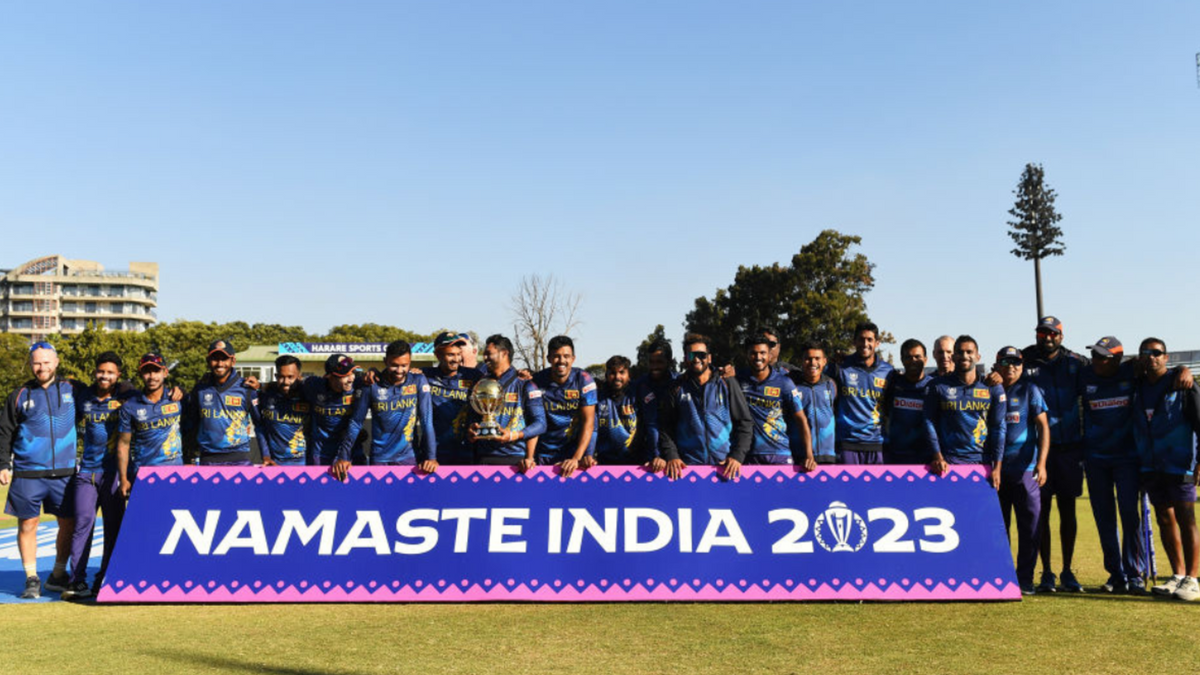
Sri Lanka might have won the World Cup Qualifier without dropping a game, but they were nowhere near convincing enough and have a lot to work on before the World Cup, writes Naman Agarwal.
Subscribe to the Wisden Cricket YouTube channel for post-match analysis, player interviews, and much more.
Ten teams. Six Associates. Four Full members. Two spots. The World Cup Qualifier was always going to be a cutthroat event, where victory would mean different things depending on whether you played Test cricket or not.
As an Associate, you were expected to provide tough competition and cause the odd upset. Qualification would invoke shock, surprise, and acclaim. Ask the Netherlands. And as a Full member, you were expected to win and qualify for the World Cup. Not doing so would result in humiliation. Ask the West Indies.
The Qualifier exceeded its expectations, providing high-quality, if chaos-filled. There were upsets; all-round performances that would last the test of time; batting records; and balls at a speed unheard of at the Associate level.
Amidst all this, Sri Lanka managed to keep their calm and went about their business in a clinical manner, or so you would think looking at their 8-0 record in the tournament.
But when you look beyond their title and the undefeated campaign, you will find gaping holes, and how they were plugged, given the quality of the opposition they faced – a luxury that they won’t have in the World Cup.
Frequent batting collapses
109-8 in 15 overs. 42-6 in 10.1 overs. 96-6 in 25.1 overs. 53-7 in 12.1 overs.
These were some of the collapses that Sri Lanka suffered from across the tournament. While most of them came towards the end of the innings, the third one mentioned above came at the start, against the Netherlands in the Super Six.
These are promising signs heading into the World Cup. They will also be delighted at what Madushanka brought to the table. A left-arm seamer who swings the new ball always provides the added advantage to his side. Madushanka might have booked a place for himself in the first XI of Sri Lanka for the World Cup with his performance in the Qualifier.
Last but not least, Sri Lanka can be proud of emerging undefeated from a tournament where some other heavyweights suffered humiliating, legacy-defining defeats. Yes, it was expected of them, but the fact that they delivered on the expectations, pulling through from crunch situations after landing themselves in a soup multiple times, is one of the biggest positives they can take into the World Cup later this year.
That Sri Lanka had to compete in the Qualifier was humbling enough. Now that they have won it, they will go into the main event with a fire under their belly. The last two times the ODI World Cup was held in the subcontinent, Sri Lanka reached at least the final. They have a few cracks to taper over before they begin thinking on those lines again, but if they can do that, they can afford to dream a little bigger.








